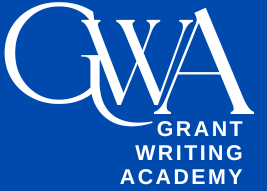Navigating the world of grants can be daunting, especially for nonprofits and organizations striving to make a difference in Missouri. The Missouri Common Grant Application (MCGA) stands as a beacon of hope, streamlining the grant application process across the state.
Whether you’re a seasoned grant writer or just starting out, understanding the intricacies of the MCGA is crucial to securing the funds your organization needs to thrive.
In this comprehensive guide, we’ll delve deep into every aspect of the Missouri Common Grant Application, providing you with the tools, tips, and insights to craft a compelling application that stands out.
Plus, don’t forget to subscribe to the Grant Writing Academy Newsletter for exclusive tips, strategies, templates, and tools to boost your grant writing success!
Understanding the Missouri Common Grant Application (MCGA)
The Missouri Common Grant Application (MCGA) is more than just a form; it’s a standardized framework designed to simplify the grant application process for nonprofits, educational institutions, government agencies, and other grant-seeking organizations in Missouri.
By providing a unified application format, the MCGA reduces the redundancy of filling out multiple applications for different funders, saving valuable time and resources.
Why the MCGA Matters
- Efficiency: Submit a single application to multiple funders who accept the MCGA, eliminating the need for repetitive paperwork.
- Consistency: Ensures that all necessary information is provided in a standardized manner, making it easier for funders to compare and evaluate applications.
- Accessibility: Opens doors for smaller organizations that may lack the resources to customize multiple grant applications.
Who Uses the MCGA?
- Foundations: Both private and community foundations in Missouri adopt the MCGA to streamline their grantmaking processes.
- Corporations: Many corporate giving programs align with the MCGA to manage their philanthropic efforts efficiently.
- Government Agencies: State and local government bodies utilize the MCGA for various funding initiatives.
How to Access the MCGA
The MCGA can typically be accessed through the websites of participating funders or centralized platforms like Missouri Grants. It’s essential to verify whether a potential funder accepts the MCGA before proceeding with your application.
Key Sections of the MCGA
Understanding each section of the MCGA is paramount to crafting a successful application. Let’s explore each component in detail.
a) Cover Page
The cover page is your application’s first impression. It should be meticulously prepared to convey professionalism and clarity.
Components of the Cover Page:
- Organization Name: Use your nonprofit’s official legal name.
- Address: Include your organization’s physical address and, if applicable, mailing address.
- Contact Information: Provide the name, title, phone number, and email of the primary contact person.
- Funder Information: Specify the name of the foundation or organization you’re applying to.
- Amount Requested: Clearly state the total amount of funding you’re seeking and provide a brief summary of its intended use.
Tips for an Effective Cover Page:
- Accuracy: Double-check all contact details for correctness.
- Consistency: Ensure the organization name matches all legal documents and other application sections.
- Professional Appearance: Use a clean layout with proper formatting to make the cover page easy to read.
b) Organizational Background
The organizational background section allows you to showcase your nonprofit’s mission, history, and accomplishments. This section builds trust and demonstrates your capacity to manage the proposed project.
What to Include:
- Mission Statement: A clear and concise statement that encapsulates your organization’s purpose and objectives.
- History: Outline the origins of your organization, significant milestones, and growth over the years.
- Programs and Services: Detail the programs you offer, highlighting their impact on the community.
- Board and Leadership: Introduce key board members and leadership, emphasizing their expertise and roles within the organization.
- Achievements and Impact: Provide metrics or success stories that demonstrate your organization’s effectiveness.
Enhancing Your Organizational Background:
- Narrative Style: While maintaining professionalism, use a storytelling approach to make your background engaging.
- Visual Aids: Incorporate charts or infographics to illustrate growth or impact metrics.
- Testimonials: Include quotes from beneficiaries or partners to add credibility.
c) Statement of Need
The statement of need is arguably one of the most critical sections of your application. It justifies why your project deserves funding by highlighting the problem it addresses and the population it serves.
Components of the Statement of Need:
- Community Need: Clearly define the issue or challenge your project aims to tackle. Use data and statistics to substantiate the significance of the need.
- Target Population: Describe who will benefit from your project, including demographics such as age, gender, socioeconomic status, and geographic location.
- Current Landscape: Analyze existing programs or services addressing the same need and identify gaps your project will fill.
- Consequences of Inaction: Explain the potential negative outcomes if the need remains unmet.
Using Data Effectively:
- Local Statistics: Reference data from Missouri-specific sources like the Missouri Department of Health and Senior Services or local universities.
- Credible Sources: Utilize reputable studies, reports, and surveys to back your claims.
- Visual Representation: Incorporate graphs or tables to present data clearly and compellingly.
Example:
If your organization seeks funding for a mental health initiative, you might include statistics on the rising rates of mental health issues in Missouri, particularly among youth, and highlight the lack of accessible services in certain regions.
d) Project Description
The project description outlines what you plan to do, how you will do it, and the expected outcomes. It serves as the blueprint for your proposed initiative.
Key Elements:
- Project Goals: Broad statements that define the desired outcomes of your project.
- Objectives: Specific, measurable, achievable, relevant, and time-bound (SMART) objectives that support your goals.
- Activities and Methods: Detailed description of the actions you will take to achieve your objectives.
- Timeline: A chronological plan that outlines when each activity will occur, including key milestones.
- Evaluation Plan: Methods for assessing the effectiveness of your project, including both qualitative and quantitative measures.
Crafting a Compelling Project Description:
- Clarity and Detail: Provide enough detail for funders to understand exactly what you plan to do without overwhelming them.
- Alignment with Needs: Ensure your project directly addresses the needs outlined in your statement of need.
- Innovative Approaches: Highlight any unique or innovative aspects of your project that set it apart from others.
- Realistic Planning: Present a feasible plan that demonstrates you have the capacity and resources to execute the project successfully.
Example:
For a community garden project, your description might include the establishment of garden plots, educational workshops on sustainable farming, partnerships with local schools, and a timeline that maps out each phase from planning to harvest.
e) Budget
The budget section provides a detailed financial plan for your project. It demonstrates fiscal responsibility and helps funders understand how their money will be utilized.
Components of the Budget:
- Personnel Costs: Salaries, wages, and benefits for staff involved in the project.
- Program Costs: Expenses directly related to project activities, such as materials, supplies, and equipment.
- Administrative Costs: Overhead expenses, including office rent, utilities, and administrative support.
- Indirect Costs: Additional costs that support the project but are not directly attributable, often calculated as a percentage of total direct costs.
- In-Kind Contributions: Non-monetary support, such as volunteer time or donated materials.
Creating a Transparent Budget:
- Detailed Line Items: Break down each category into specific items to provide clarity.
- Justifications: Include explanations for each budget item to demonstrate necessity and reasonableness.
- Consistency: Ensure that your budget aligns with your project description and objectives.
- Realism: Avoid inflating costs or omitting essential expenses. Present a balanced and achievable financial plan.
f) Budget Narrative:
In addition to the numerical budget, include a narrative that explains each line item, providing context and justification. This helps funders understand the rationale behind your financial requests.
Example:
If you’re requesting funds for a literacy program, your budget might include costs for purchasing books, hiring a literacy specialist, marketing the program to the community, and covering administrative expenses like office supplies and transportation.
g) Sustainability
Funders are keen on ensuring that their investment leads to long-term benefits. The sustainability section addresses how your project will continue to operate and maintain its impact after the grant period ends.
Key Points to Address:
- Future Funding Sources: Identify potential revenue streams or additional grants that will support the project in the future.
- Organizational Capacity: Demonstrate your organization’s ability to manage and sustain the project through existing resources or by scaling operations.
- Community Support: Highlight partnerships, community engagement, and stakeholder involvement that contribute to the project’s longevity.
- Impact Continuation: Explain how the benefits of the project will persist beyond the initial funding period.
Strategies for Ensuring Sustainability:
- Diversified Funding: Relying on multiple funding sources reduces dependence on a single grant and enhances stability.
- Revenue-Generating Activities: Incorporate elements that can generate income, such as service fees or product sales.
- Capacity Building: Invest in training and infrastructure that enable your organization to maintain the project independently.
- Evaluation and Adaptation: Continuously assess the project’s effectiveness and make necessary adjustments to ensure ongoing relevance and impact.
Example:
For a job training program, sustainability might involve developing partnerships with local businesses that can offer apprenticeships, creating a fee-for-service model for certain training modules, and applying for additional grants focused on workforce development.
Advanced Tips for a Successful MCGA Submission
Elevate your grant application with these advanced strategies that go beyond the basics.
a) Leverage Storytelling
Stories resonate more deeply than data alone. Incorporate narratives that illustrate the human impact of your work.
- Personal Testimonials: Share stories from individuals who have benefited from your programs.
- Case Studies: Present detailed examples of successful projects or initiatives.
- Emotional Appeal: Highlight the passion and dedication of your team to engage funders on an emotional level.
b) Align with Funder Priorities
Research each funder’s mission and funding priorities to tailor your application accordingly.
- Customization: While the MCGA is standardized, customize sections like the project description and statement of need to align with the specific interests of each funder.
- Highlight Relevant Programs: Emphasize aspects of your work that directly relate to the funder’s focus areas.
c) Demonstrate Measurable Impact
Funders seek assurance that their investment will lead to tangible results.
- Clear Metrics: Define specific indicators that will measure the success of your project.
- Baseline Data: Provide initial data to compare against post-project outcomes.
- Regular Reporting: Outline how you will keep funders informed about progress and results.
d) Strengthen Your Evaluation Plan
A robust evaluation plan showcases your commitment to accountability and continuous improvement.
- Methodology: Explain the methods you will use to collect and analyze data.
- Frequency: Specify how often evaluations will take place.
- Responsibility: Assign roles for who will conduct the evaluations and report findings.
e) Enhance Visual Appeal
A visually appealing application can capture attention and improve readability.
- Consistent Formatting: Use uniform fonts, headings, and spacing throughout the application.
- Infographics and Charts: Visual representations of data can make complex information more accessible.
- Professional Design: Consider using templates or seeking design assistance to ensure a polished look.
f) Build Strong Partnerships
Collaborations can strengthen your application by demonstrating broad support and shared resources.
- Letters of Support: Include endorsements from partners, community leaders, or other stakeholders.
- Joint Initiatives: Highlight collaborative projects that leverage the strengths of multiple organizations.
- Resource Sharing: Showcase how partnerships will contribute to the project’s success and sustainability.
Common Mistakes to Avoid
Even the most well-intentioned applicants can stumble. Here are common pitfalls and how to steer clear of them.
a) Failing to Follow Instructions
Ignoring the funder’s guidelines can lead to automatic disqualification.
- Read Carefully: Thoroughly review all application instructions and requirements.
- Compliance: Ensure that your application meets every specified criterion, including formatting, word limits, and submission deadlines.
- Checklists: Use checklists to track required documents and sections.
b) Being Vague or Generic
Ambiguous language and lack of specificity weaken your application.
- Specific Goals: Clearly define what you aim to achieve with precise language.
- Detailed Plans: Provide comprehensive descriptions of your activities, timelines, and expected outcomes.
- Avoid Jargon: Use clear, straightforward language that can be understood by individuals outside your organization.
c) Overlooking the Budget
A poorly constructed budget can raise red flags about your financial management.
- Accuracy: Ensure all figures are correct and reflect realistic costs.
- Justifications: Provide explanations for each budget item to demonstrate necessity.
- Alignment: Make sure the budget aligns with your project description and objectives.
d) Neglecting to Proofread
Errors in your application can undermine your professionalism and attention to detail.
- Multiple Reviews: Proofread your application several times and consider having others review it as well.
- Consistency Checks: Verify that information is consistent across all sections of the application.
- Grammar and Spelling: Correct any grammatical or spelling mistakes to maintain credibility.
e) Ignoring the Evaluation Component
Without a clear plan to assess your project’s success, funders may question its potential impact.
- Comprehensive Plan: Develop a detailed evaluation strategy that includes both qualitative and quantitative measures.
- Realistic Metrics: Choose indicators that are achievable and directly related to your objectives.
- Reporting Mechanism: Explain how and when you will report evaluation findings to the funder.
Case Studies: Success Stories with the MCGA
Learning from others’ experiences can provide valuable insights and inspiration. Here are a few hypothetical case studies illustrating successful MCGA submissions.
Case Study 1: Youth Empowerment through After-School Programs
Organization: Empower Missouri Youth
Project: After-School STEM Initiative
Challenge: Limited access to quality STEM education for middle school students in underserved communities.
Approach:
- Developed a comprehensive after-school program focused on science, technology, engineering, and mathematics (STEM).
- Partnered with local schools and tech companies to provide resources and mentorship.
- Incorporated hands-on projects and real-world problem-solving activities.
Outcome:
- Increased student engagement in STEM subjects.
- Improved standardized test scores in math and science by 20%.
- Fostered partnerships with three local tech firms for ongoing support and internship opportunities.
Success Factors:
- Clear alignment with community needs and funder priorities.
- Strong partnerships that enhanced program resources and sustainability.
- Effective use of data to demonstrate impact and guide program improvements.
Case Study 2: Healthcare Access in Rural Missouri
Organization: Rural Health Alliance of Missouri
Project: Mobile Health Clinics
Challenge: Limited access to healthcare services in rural areas, leading to untreated chronic conditions.
Approach:
- Established mobile health clinics to provide essential medical services, including screenings, vaccinations, and chronic disease management.
- Trained local volunteers and healthcare professionals to staff the clinics.
- Utilized data to identify high-need areas and optimize clinic routes.
Outcome:
- Served over 5,000 residents in the first year.
- Reduced emergency room visits by 15% in targeted communities.
- Secured additional funding from state health departments for expansion.
Success Factors:
- Detailed needs assessment supported by robust data.
- Comprehensive project description with clear goals and objectives.
- Transparent budget outlining costs and demonstrating financial responsibility.
Case Study 3: Environmental Conservation and Education
Organization: Missouri Green Future
Project: Community Tree Planting and Education Program
Challenge: Deforestation and lack of environmental education in urban neighborhoods.
Approach:
- Organized community tree planting events in collaboration with local schools and environmental groups.
- Developed educational workshops on the importance of trees and sustainable practices.
- Implemented a monitoring system to track tree growth and environmental impact.
Outcome:
- Planted over 2,000 trees in urban areas, improving air quality and providing shade.
- Educated 1,500 community members through workshops and events.
- Strengthened community ties and increased volunteer participation in environmental initiatives.
Success Factors:
- Strong emphasis on sustainability and long-term impact.
- Engaging project activities that involved the community directly.
- Clear demonstration of environmental and social benefits supported by data.
Frequently Asked Questions (FAQ)
1. What is the deadline for the Missouri Common Grant Application?
The MCGA does not have a universal deadline as it is used by various funders with their own schedules. It’s essential to check the specific deadlines of each funder you plan to apply to.
2. Can I use the MCGA for multiple grant applications simultaneously?
Yes, the primary advantage of the MCGA is that it allows you to submit a single application to multiple funders who accept the MCGA, saving you time and effort.
3. Do I need to customize the MCGA for each funder?
While the MCGA provides a standardized format, it’s advisable to tailor sections like the project description and statement of need to align with each funder’s specific priorities and guidelines.
4. What supporting documents are typically required with the MCGA?
Common supporting documents include IRS tax-exempt status, audited financial statements, letters of support, board member lists, and program brochures. Always review each funder’s requirements to ensure you include all necessary documents.
5. How long does it take to complete the MCGA?
The time required varies depending on the complexity of your organization and project. On average, it can take anywhere from a few days to several weeks to gather information, complete the application, and compile supporting documents.
6. Can individuals apply using the MCGA?
The MCGA is primarily designed for organizations such as nonprofits, educational institutions, and government agencies. Individual applicants should verify with funders if the MCGA is applicable to their circumstances.
7. How can I improve my chances of winning a grant with the MCGA?
- Thoroughly address each section with clear, concise, and compelling information.
- Use data and evidence to support your statements.
- Align your project with the funder’s priorities and mission.
- Ensure your budget is detailed and justified.
- Proofread your application to eliminate errors and enhance professionalism.
Final Thoughts:
Embarking on the journey to secure grant funding through the Missouri Common Grant Application can significantly impact your organization’s ability to serve the community effectively.
By understanding each component of the MCGA, avoiding common pitfalls, and implementing advanced strategies, you position your organization for success in a competitive funding landscape.
Remember, grant writing is both an art and a science. It requires a balance of creativity, strategic thinking, and meticulous attention to detail. Stay persistent, seek feedback, and continuously refine your approach to enhance your grant writing skills.
Subscribe to Grant Writing Academy Newsletter
Ready to elevate your grant writing prowess? Join the Grant Writing Academy Newsletter today! By subscribing, you’ll gain exclusive access to:
- Expert Tips: Learn the latest strategies and best practices in grant writing.
- Proven Templates: Utilize professionally designed templates to streamline your application process.
- Actionable Tools: Access tools that help you manage deadlines, track progress, and collaborate with your team.
- Insider Insights: Stay informed about funding trends, new opportunities, and success stories from fellow grant seekers.
- Monthly Webinars: Participate in live sessions with grant writing experts to enhance your skills and knowledge.
Don’t miss out on the resources that can transform your grant applications and boost your success rates. Subscribe now and take the first step towards securing the funding your organization deserves!




